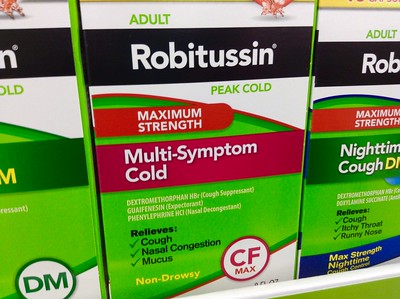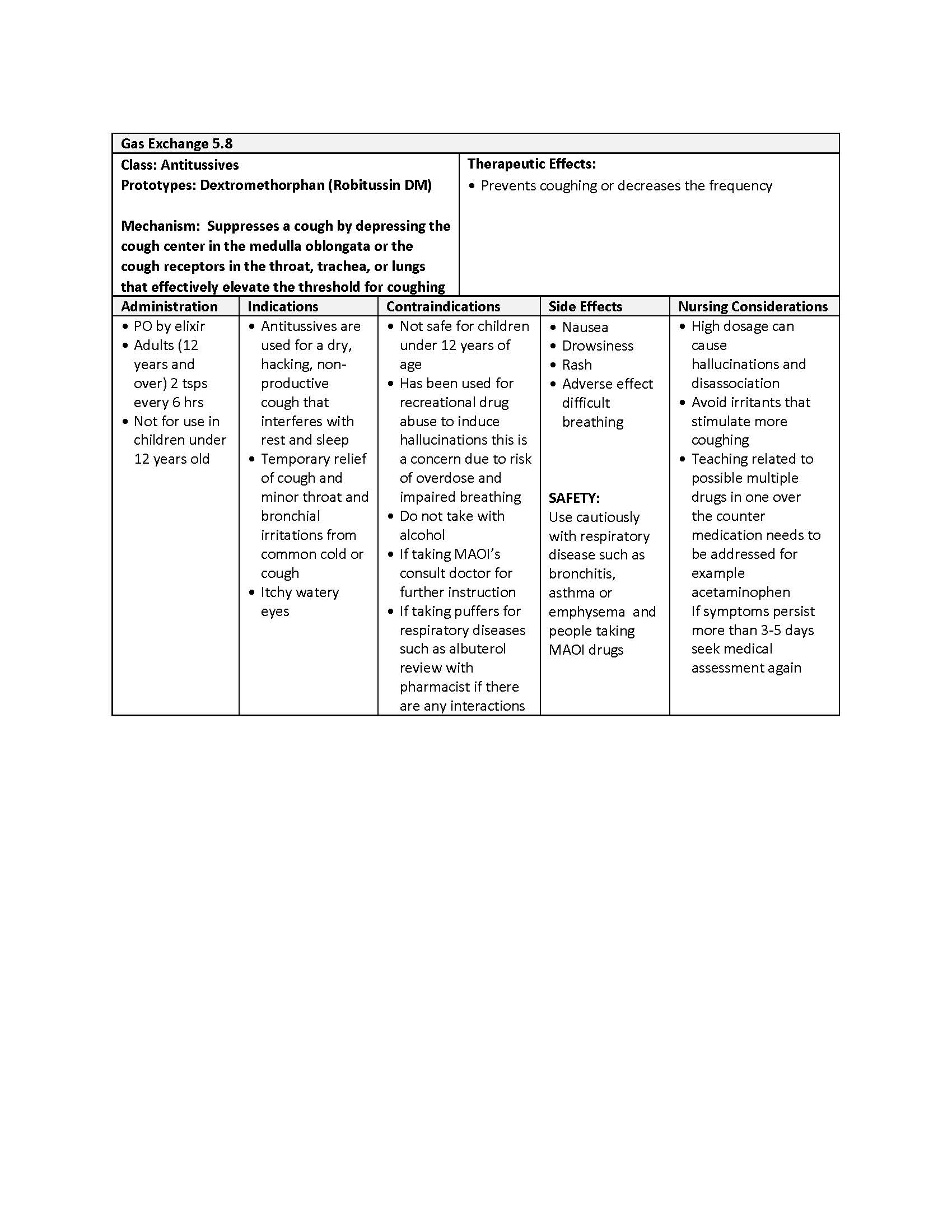Gas Exchange
5.8 Antitussives
Open Resources for Nursing (Open RN)
Antitussives
Antitussives are frequently used to prevent cold and flu symptoms. In this chapter, we will review one commonly used specific antitussive called Dextromethorphan.
Dextromethorphan is an example of an antitussive (see Figure 5.8[1]).

Mechanism of Action
Dextromethorphan suppresses a cough by depressing the cough center in the medulla oblongata or the cough receptors in the throat, trachea, or lungs, effectively elevating the threshold for coughing.
Indication for Use
Antitussives are used for a dry, hacking, nonproductive cough that interferes with rest and sleep.
Nursing Considerations Across the Lifespan
This medication is not safe for children under the age of 4 years.
Adverse/Side Effects
The most common side effects include nausea and drowsiness. Some clients may experience a rash or difficulty breathing. High doses may cause hallucinations and disassociation, and the drug has been reported to be used as a recreational drug.[2]
Client Teaching & Education
Clients should take care to avoid irritants that stimulate their cough. Additionally, antitussive medications can cause drowsiness, and clients should avoid taking them with other CNS depressants or alcohol.[3]
Now let’s take a closer look at the medication card on dextromethorphan in Table 5.8.[4], [5], [6]
Table 5.8 Dextromethorphan Medication Card

Media Attributions
- 16034568990_72d40f246d_w
- Antitussives
- "Robitussin Cough Cold Flu Congestion decongestant Relief Medicine" by Mike Mozart is licensed under CC BY 2.0 ↵
- Frandsen, G. & Pennington, S. (2018). Abrams’ clinical drug: Rationales for nursing practice (11th ed.). Wolters Kluwer. ↵
- uCentral from Unbound Medicine. https://www.unboundmedicine.com/ucentral ↵
- This work is a derivative of Pharmacology Notes: Nursing Implications for Clinical Practice by Gloria Velarde licensed under CC BY-NC-SA 4.0. ↵
- Frandsen, G. & Pennington, S. (2018). Abrams’ clinical drug: Rationales for nursing practice (11th ed.). Wolters Kluwer. ↵
- This work is a derivative of Daily Med by U.S. National Library of Medicine in the public domain. ↵

